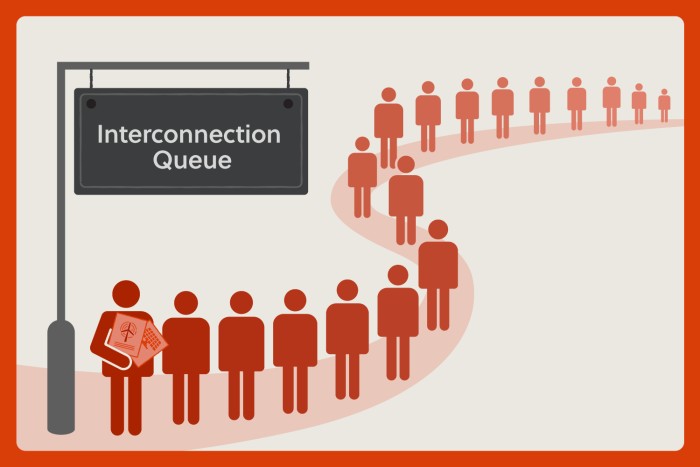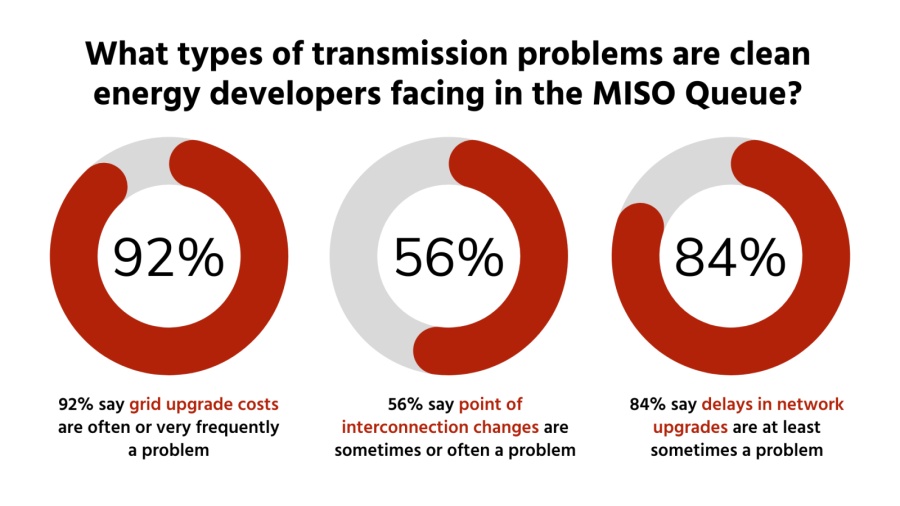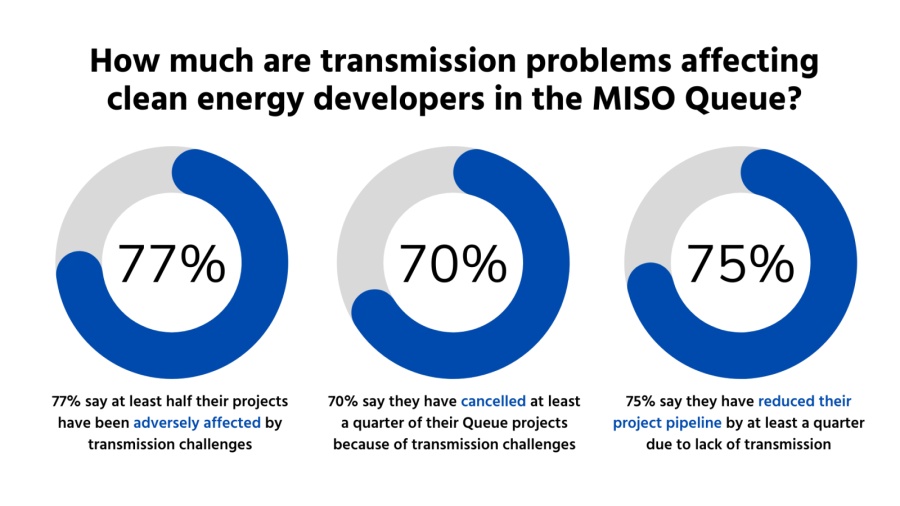New survey: Developers dish on what’s grinding the gears for their projects in MISO
 | Beth Soholt, Executive Director |

 | Beth Soholt, Executive Director |
Lawrence Berkeley National Laboratory is out with its latest annual report on the nation's grid "interconnection queues" – the long lines where new clean energy projects wait for studies to see if they can connect to transmission and proceed to construction. It's a familiar reprise: thousands of solar, wind, hybrid and battery storage projects waiting for years, their potential electricity generation and job creation on hold.
The plight of projects in interconnection queues and the pace of development and transmission matter a lot right now – for bringing on generation needed to meet future demand, for strengthening grid resilience amid more frequent extreme weather challenges, and for expanding access to lower-cost power sources for consumers.
Electricity grid operators who run the queues like to shift the spotlight off themselves and over to developers and supply chains. But developers certainly have every financial incentive to get shovels in the ground and get projects producing power. So what's really going on?
To find out, we conducted a survey of our clean energy developer members operating in the MISO region who've had solar, wind, hybrid and battery storage projects in the MISO Interconnection Queue over the last 5+ years. The 14 developers who completed our survey include companies working in nearly every MISO North and South state, with Queue projects sited in Illinois, Indiana, Arkansas, Michigan, Mississippi, Wisconsin, Minnesota, Missouri, Louisiana, Iowa and North Dakota. Here's what our survey found:
It's almost all about transmission
Developers in MISO cite a range of challenges, especially delays, inconsistencies and inaccuracies in the interconnection studies during the multiple phases of the Queue process. They also note challenges with transmission owners making last-minute changes, not providing timely answers on interconnection questions, or not being able to procure equipment.
However, there is one issue that rises to the top: 92% of survey respondents said that grid upgrade costs often or very frequently affect their projects in the MISO Queue – with half saying it's happening very frequently. As one developer explains, the interconnection studies for their project showed "surprisingly high interconnection costs requiring 765 kV lines" and concluded that "this area needs new transmission to facilitate renewables integration."

In other words, a grid unprepared to connect clean energy is putting untenable transmission price tags on projects expected to bear the cost of big upgrades on their own.
Subscribe to our newsletter for the latest on energy & our work
Another challenge many developers note is changes in the "point of interconnection" – the specific place on the grid where their project will connect. Just over half (56%) say this is sometimes or often a problem, one that likewise stems from grid limits and shortcomings.
Even with an interconnection agreement in hand – the last stage of the Interconnect Queue process – transmission challenges are still keeping projects from getting into construction. 84% of developers said that delays in network upgrades are sometimes (46%) or often/very frequently (38%) a problem for their projects.
Impacts are widespread
So what's the upshot of these transmission-related challenges in the MISO region? How much of an impact is this all having?
Our survey found that nearly half (42%) of clean energy developers say that nearly all of their Queue projects have been adversely affected in some way by a transmission-related challenge. More than three-quarters (77%) are seeing at least half of all their projects adversely affected.
 In addition to delays in projects getting to construction, transmission challenges are also resulting in projects being canceled. Looking back at their MISO Queue projects over the last 5+ years, 70% of developers report canceling at least a quarter of their projects because of transmission-related problems. Just over a third (35%) have canceled half or more.
In addition to delays in projects getting to construction, transmission challenges are also resulting in projects being canceled. Looking back at their MISO Queue projects over the last 5+ years, 70% of developers report canceling at least a quarter of their projects because of transmission-related problems. Just over a third (35%) have canceled half or more.
Our survey also uncovered a less visible impact: lack of transmission shrinking the potential pipeline of solar, wind, hybrid and battery projects. Here's how one developer puts it:
“Because of insufficient transmission in areas otherwise well-suited for wind projects, there is a 'race to the top' for leases with select large landowners, with one single developer 'winning' and concentrating the viable project on the property of one wealthy individual. With only one 'spot' available on transmission lines, other developers drop out of development in resource-rich areas, and additional landowners lose the chance to participate in other projects in the area.
Because of geographies with insufficient transmission, 75% of developers in our survey reported a 25% or more reduction in their company's potential pipeline of projects and 37% said their potential pipelines are half what they would be if transmission wasn't so lacking – a pretty stark marker of the headwinds the unprepared grid is creating for transition to clean energy.
Support is needed from every corner
MISO is at the forefront among grid operators nationally when it comes to recognizing transmission system shortcomings; looking ahead at future generation mix scenarios that will be heavily clean energy; and planning and building regional long-range lines expressly designed for future reliability and interconnection based on those scenarios. The current portfolio of 18 long-distance transmission lines now moving forward across Midwest MISO states is a great start.
As a grid operator, MISO clearly has an outsized role to play in solutions to the problems our survey documented – everything from Interconnection Queue process reforms to long-range lines to being a constructive problem-solver on challenges with transmission owners. State utilities regulators are critical for the roles they play in permitting, planning, and in the MISO stakeholder process on transmission planning and cost allocation. State and local officials – as well as residents and businesses – are key to expressing the public demand for action necessary to avert delays and special interest opposition.
When it comes to getting our grid in shape, support is needed from literally every corner. It's going to take everyone.